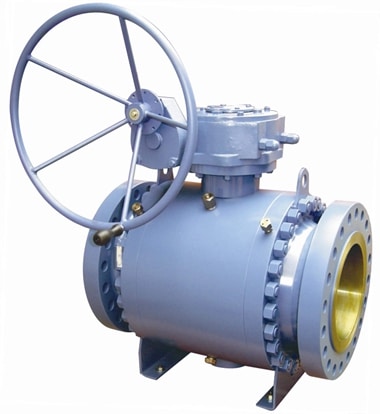Ball valves make a contribution to the prosperity of the valve industry. In fact, there are many types of ball valves, which are designed and manufactured based on different sizes, shapes, and materials or materials and so on. Despite the differences in specifications, all ball valves are designed to control the flow of liquids or gases. When the device is turned on and off, it determines the way in and out.
In fact, the variation of the ball cover can be listed as follows
. Originally, the full port valve refers to the ball whole valve. The size of the hole is the same as the connecting pipe. Therefore, the passage is limited to make it relatively smooth. Second, the lowered port cover occupies an opening in the Anix USA, which is slightly smaller than the pipe size. It helps reduce and reduce than before with smooth control. Third, grunion valves are designed for situations that require high-speed flow control. In addition, there are some three or four way valves. It can change the flow rate on the valve itself. These valves are generally for more specific industrial needs.
Although these types are different
Some common characteristics are the same. For example, it is made with an outer shell that includes a valve ball, including a handle. The valve moves up and down, or rotates, to control the flow. And the valve arm controls the valve ball. These handles can be driven by some mechanical motors, or they can be operated manually. When the valve itself is pushed open, the hole in the ball faces the same direction as the valve cover and flow. When the valve handle is turned so that the ball of the valve faces the wall of the valve, the flow stops immediately.
Valves are generally divided into different types to derive specific specifications and functions. Now, here is an overview of ball valves. Like other valves, ball valves are often used to control water flow. The part shown is the spherical disk, which controls the flow.
And there is a hole or hole in the center of the ball.
In fact, the two ends of the cap are the most visible. When the two ends of the valve are aligned, there will be flow. And when the lid is closed, the hole is perpendicular to the edge of the lid, and the flow is blocked. During this process, the handle or lever will really support the proper position of the port.
Based on specific specifications and simple operation, ball valves are used in industry because of their flexibility and various pressure and temperature support. And the width is usually between 0.5 cm and 30 cm. In general, the material for the body is metal, plastic or metal with a ceramic center. And the ball is usually chrome plated for maximum durability and maximum valve performance when closed.
To meet some specific performance requirements,
Ball valves are further classified into different types. In terms of body types, they are single body, triple body, split body, top entry and welded. He said the classification was based on the number of valve parts. Although there are different types of valves, their operation is the same. And as for drilling the ball mechanism itself, there are also many styles.
These are full port, reduced port
trunnion and cavity filling ball valves. Also, the manual one can be closed quickly. And some have pneumatic or motorized actuators. These valves are usually equipped with built-in indicators. When you do this, it is easy to change the control signal to position the actuator and open the valve as needed. For example, multi-port ball valves are generally available in 4 ways, or more. They are also in business. And to direct the drive engine from front to back, the process is done by turning the one-lever ball valve with 4 directions 4. In addition, the one-piece ball valve almost always reduces the hole, which is relatively cheap and common. . Thrown away. With two parts that are slightly reduced (or standard) usually holes, they can be climbed or fixed.
With that said, some general ideas about ball valves may come to your mind. I hope its okay


